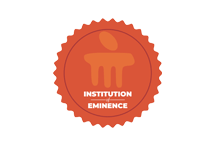Electrospun nanofibers for dermatological delivery
Document Type
Article
Publication Title
Journal of Drug Delivery Science and Technology
Abstract
To attain the intended therapeutic outcome, it is imperative to employ an appropriate drug-delivery system that ensures precise control over the release profile of the drug. The optimal delivery system must meticulously adjust the location, timing, and rate of drug release to closely align with the therapeutic target. Nonetheless, attaining this synchronization poses a significant challenge in the complex design of drug-delivery systems. In recent times, nanomaterials, especially nanofibers (NFs), have been extensively studied, primarily due to their versatility in drug delivery for therapeutic objectives. Of the various fabrication techniques, electrospinning stands out as a notable method for producing electrospun nanofibers (ESNFs), which hold significant promise in the field of therapeutic applications. Drugs are capable of being included by optimizing the architecture of electrospun nanofibers, enabling their penetration through the skin for localized or systemic effects. Drug delivery through the skin has evolved from simple applications directly onto wounds or infection sites to more refined and compact drug delivery systems. Extensive investigations have been conducted on the skin, the body's largest organ, revealing its key potential as a vehicle for delivering a wide range of drugs via both topical and transdermal routes. This investigation aims to overcome the constraints associated with conventional administration methods. The objective of this review is to present an in-depth overview of Electrospun Nanofibers, delving into both synthesis methods and multiple applications in the realm of biomedicine.
DOI
10.1016/j.jddst.2024.105981
Publication Date
9-1-2024
Recommended Citation
Dharmaraj, Dikshita; Chavan, Nirja; Likhitha, U.; and Nayak, Usha Y., "Electrospun nanofibers for dermatological delivery" (2024). Open Access archive. 10127.
https://impressions.manipal.edu/open-access-archive/10127


